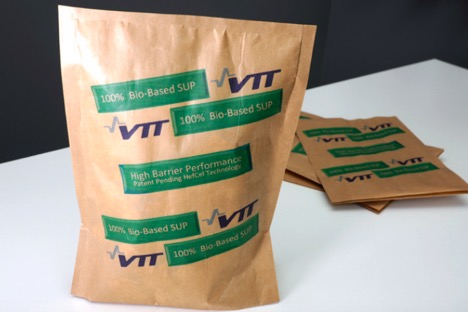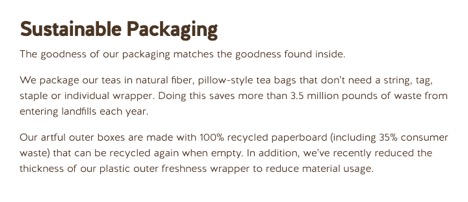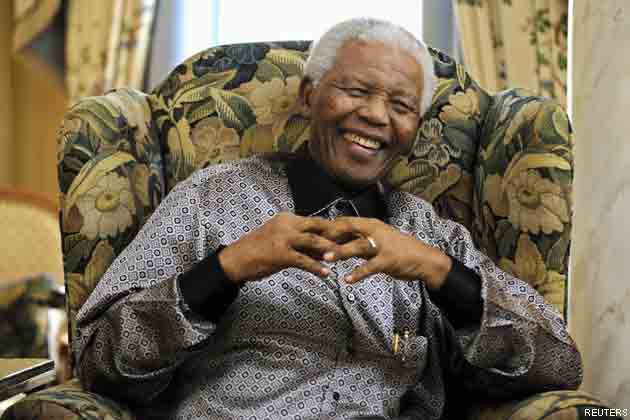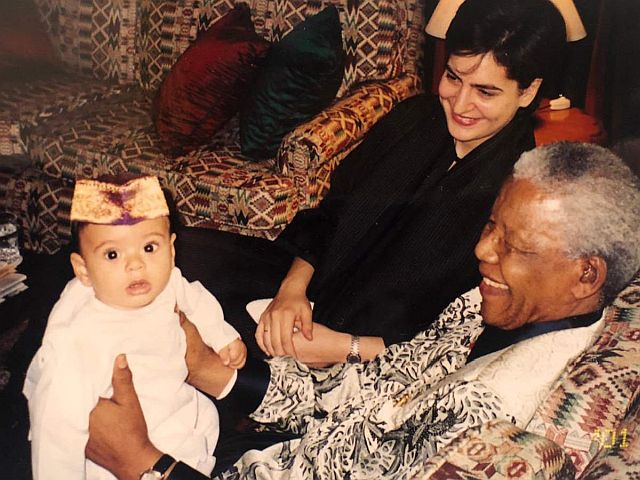CSR arm of HCL announces Rs. 16.5 crore grants for NGOs
HCL Foundation, the Corporate Social Responsibility (CSR) arm of HCL Technologies (HCL), announced the opening of the application portal for Edition VI of HCL Grant, one of the most coveted institutionalized CSR grants of India. Three NGOs, one for each of the three categories will be awarded a grant of INR 5 crores each for a 3-5 year project. In addition, the remaining two finalist NGOs in each category will be awarded a one-year grant of ₹25 lacs, taking the overall Grant commitment to ₹16.5 crore.
HCL Grant is a flagship programme of HCL Foundation which recognizes the rise of the community-led ecosystem of NGOs — the Fifth Estate. It recognizes the path-breaking work being done by NGOs in rural development through an independent, robust and democratic process. Organizations with innovative, replicable and sustainable models, which can make a significant contribution towards rural development in the categories of Education, Health and Environment, are eligible for it.
In the current edition, HCL Grant has made a few changes in its process. From this edition onwards, the eligibility criteria in the Education and Health categories concerning an NGO’s average annual expenditure over the last three years has been reduced from INR 1.5 crores to INR 1 crore. Also, henceforth, NGOs will need to submit only a brief concept note of the proposal in Stage 1 (as per the online format).
Detailed proposals will be required only in Stage 2 from the shortlisted NGOs. There will be no charge or fees while submitting the application. No authorized individual, third party, company, agency or organization may accept an application on behalf of HCL Grant or ask for any benefit, either monetary or in kind, for completing the application process.
In these times of global and national crisis, HCL Foundation, while continuing to respond to the COVID-19 pandemic, also reaffirms that the HCL Grant commitment will remain directed towards the objective of achieving sustainable, replicable & scalable rural development, through long-term strategies. The COVID-19 pandemic has opened a range of challenges in rural India, over and above the already prevailing conditions. While HCL Foundation recognizes that the applicant NGOs will take into consideration these challenges, it requests NGOs to ensure that the HCL Grant proposal remains focused on transformational and impactful rural development, in the areas of Environment, Health & Education, through innovative, relevant and cost-effective strategies.
While applying for HCL Grant Edition VI, it is imperative that the COVID 19 Pandemic situation on the ground should be taken into consideration. The pandemic has impacted various states and districts differently, and therefore it is critical that the situation assessment is done at micro-meso-macro levels while developing long term solutions towards issues related to Environment, Health & Education in the rural belt of India.
Last date for application is August 8.
Disclaimer: This media release is auto-generated. The CSR Journal is not responsible for the content
Metro Bhavan skyscraper, new suicidal threat to Aarey
Protecting the Aarey Forest was at the centre of a citizen-driven protest last year. The forest is under threat yet again. The government has planned another 33-storey skyscraper ‘Metro Bhavan’ which will eat into whatever is left of the urban forest. This building will be in addition to the notorious Aarey Metro shed that environmentalists were protesting against.
The MMRDA has already begun construction work, pretty furtively, in October 2019 itself. The state urban development department had issued a notification in August 2019, changing the land-use of the 2.03-hectare plot (which was previously in a no-development zone), to allow the construction of Metro Bhavan and allied structures. This would include a permanent re-servicing station, a temporary labour camp and a steel machinery yard.
Constructing this skyscraper will require the chopping of at least 70 trees on the plot, which the conservation group says is in an eco-sensitive zone (ESZ) of Sanjay Gandhi National Park. They feel more green areas within Aarey may be hived off in future on some or the other pretext. “If citizens don’t wake up, Aarey will be gone before anyone knows it,” Stalin D from Vanashakti told Hindustan Times.
If you carefully look at the proposal, Metro Bhavan is actually commercial building disguised as an administrative government building. It will have commercial spaces available on lease. The proposed area for Metro Bhavan is near Seepz where a number of commercial establishments are already located. In comparison to its 33 floors, Delhi Metro Bhavan is merely 8 floors high and handles a lot more traffic than Mumbai. The government is holding a mandatory public hearing to hear out “objections from the public” on video conference today. For a better grasp on the situation, watch this introduction video to the public hearing on the Aarey Conservation Group Facebook page:
https://www.facebook.com/AareyConservationGrp/videos/282981942949758/
Stalin’s warning may ring true. If we don’t participate in this public hearing against Metro Bhavan, the “forest” in Aarey Forest may soon disappear, and we will be left with another concrete BKC-like complex. Take, for example, the fact that the Maharashtra government had sanctioned a zoological park across 76.8 hectares and the state forest department plans to rehabilitate encroachments within the national park across a 36.42-hectare plot within Aarey.
CSR News: Lam Research India installs ‘Suraksha’ kiosks in Bengaluru
Lam Research India announced CSR funding to local organizations to help address the shortage of personal protective equipment (PPE) kits available in the state for COVID-19 testing. In addition, some of the funds will be used to build “Suraksha” kiosks, named after the Hindi word for safety or protection. They feature an innovative design that eliminates the need for full-body PPE kits since it provides a protective physical barrier between the health professional and the patient.
The Suraksha kiosks were originally designed by 13 volunteers from Lam Research India along with five local doctors, who collaborated to outline the key problems with the COVID-19 sample collection process that an engineering team could help address. The first kiosk was funded by the volunteer team and built by a local vendor.
 Realizing the benefits of the kiosk, the Department of Medical Education requested more Suraksha kiosks for hospitals across the state. Lam India’s Corporate Social Responsibility (CSR) team offered to provide funds for the additional kiosks, as well as PPE kits, as part of its community engagement activity. The first two of the Suraksha kiosks were installed in the city’s Victoria and Bowring Hospitals and the District hospital, Chikkaballpaur. Using each kiosk, technicians can test an average of 200 people per day.
Realizing the benefits of the kiosk, the Department of Medical Education requested more Suraksha kiosks for hospitals across the state. Lam India’s Corporate Social Responsibility (CSR) team offered to provide funds for the additional kiosks, as well as PPE kits, as part of its community engagement activity. The first two of the Suraksha kiosks were installed in the city’s Victoria and Bowring Hospitals and the District hospital, Chikkaballpaur. Using each kiosk, technicians can test an average of 200 people per day.
The kiosk is built with a pressurized and filtered working area, a three-sided sampling interface, an automated sanitization system, extended reach gloves assembly, and separated sample-collection areas to facilitate the safety of the patients and the health care personnel. They feature a built-in sanitizing system so that only one health professional is needed to collect a sample, freeing the previously needed second health professional to assist with other patients.
“This is a great initiative by volunteers from Lam Research India,” said Dr. K Sudhakar, Minister of Medical Education for the Government of Karnataka. “The uniquely designed kiosks protect frontline healthcare workers. I would like to thank Lam’s volunteers and its CSR team for stepping forward to help the community in this time of dire need.”
Said Krishnan Shrinivasan, VP and Managing Director of Lam Research India, “We hope that these sample collection kiosks and additional PPE kits will provide much-needed support to our healthcare professionals and hospitals.”
Lam actively encourages its employees to participate in community engagement activities that promote the spirit of giving back. CSR of Lam Research India works closely with several non-governmental organizations (NGOs) and schools to provide students from economically weaker sections of the society with better infrastructure and financial assistance, with a focus on STEM education and a better quality of life.
Disclaimer: This media release is auto-generated. The CSR Journal is not responsible for the content
OPPO and Forbes India felicitate the ‘Ultimate 120’ COVID-19 innovators
OPPO India, the global smart device brand, announced a new initiative in collaboration with Forbes India to honour the heroes of COVID-19. Under this initiative, named “Salute to the Ultimate 120 with the Power of Change”, OPPO India will showcase 120 COVID-19 innovators from all domains of life on their strategy to manage this pandemic and acknowledge some out-of-the-box ideas. These innovators vary across innovation, endurance, performance, and style.
Forbes India magazine will produce four special issues. Each issue will be centred on each of the four pillars – Innovation, endurance, performance, and style and highlight the creative minds of influencers. They will be featured on other platforms in a video format to highlight the contribution. As part of this collaboration, OPPO has also felicitated the influencers with their recently launched Find X2 Pro smartphone.
Asimov Robotics’ founder Jayakrishnan T and his team created a robot that helps provide patients with food and medicines, thereby reducing the chances of health workers contracting the virus. Biodesign Innovation Labs is building affordable ventilators; CEO Gautham Pasupuleti wants to make the device accessible to all. Nupur Agarwal provided farmers with seeds and fertilisers during the lockdown, while also purchasing food produce from them.
Disclaimer: This media release is auto-generated. The CSR Journal is not responsible for the content.
Govt. workshop on Aatmanirbhar Bharat – Collaboration in Manufacturing
Towards developing self-reliance in manufacturing, the Department of Heavy Industry (DHI), Government of India, organised an online workshop ‘Aatmanirbhar Bharat – Collaboration in Manufacturing’. This event saw a cross-section of Indian manufacturing organisations coming together to dwell upon the next steps for increased cooperation in indigenous manufacturing.
The workshop aimed at fostering better utilisation of assets across industries to find solutions by collaborative R&D for development of technologies behind imports. Chaired by Arun Goel, Secretary (HI), the workshop was attended by more than 120 participants, comprising senior DHI officers, heads and senior executives of CPSEs, Indian private sector companies and multinational companies engaged in manufacturing, as well as senior representatives of trade associations.
Bharat Heavy Electricals Limited (BHEL) made a presentation outlining its capabilities during the workshop. Highlighting the need for rapid growth in domestic manufacturing envisioned in the Government’s target of 25% contribution from the manufacturing sector to GDP by 2025, Secretary (HI) said that the workshop was an initiative for kickstarting regular interaction and collaboration between various Indian organisations to achieve an Aatmanirbhar Bharat.
Indigenous capabilities available for design, R&D, prototyping, manufacturing and testing in many of the CPSEs can be made available to all stakeholders for seamless co-operation between the public and private sectors for which technology platforms were also being developed, he said. Chairman and Managing Director, BHEL, Dr. Nalin Shinghal, outlined the R&D, engineering, manufacturing and testing capabilities of BHEL and invited companies to associate with BHEL for achieving this important national mission. Participants from nonpower sector companies, as also customers dependent on imported components / sub-assemblies / assemblies, who are looking forward to indigenising their supply chains, evinced keen interest in working with BHEL.
Disclaimer: This media release is auto-generated. The CSR Journal is not responsible for the content
CSR News: Plantation drives across all Vedanta Sesa Goa Iron Ore business locations
Vedanta Sesa Goa Iron reiterated its commitment towards sustainable ecosystem on the occasion of ‘Van Mahotsav’, by initiating series of plantation drives. The weeklong plantation programmes from 1st to 7th July 2020, across all Vedanta Sesa Goa Iron Ore business locations at Goa, Karnataka & Barbil – Odisha, aims to raise awareness about Environment Conservation and drive the efforts towards creating sustainable & greener environment by facilitating afforestation.
Over the past several decades, the Company has contributed to environmental conservation initiatives through robust community engagement programmes including environment awareness campaigns, plantation drives, assistance to nearby communities for adopting eco-friendly practices, introduction of greener and eco-friendly business practices etc.
Sauvick Mazumdar- CEO, Vedanta Sesa Goa Iron Ore business applauded the team and said: “We are committed to work in complete harmony with Environment conservation and sustainable growth through adoption of eco-friendly business practices & driving the environment protection initiatives among the communities and all our stakeholders.”
Sanjay Naik, Panchayat Member of Sanvordem Village panchayat appreciated this initiative and said: “I appreciate the initiative taken by the Company officials at Codli Mine for arranging plantation drive even during this pandemic situation with all the precautionary measures in place.”
The Company has several Biodiversity conservation measures. It has reclaimed a mine at Sanquelim in a structured manner to ensure survival of flora and fauna along with the development of an aquatic ecosystem. It organizes plantation drives to develop green belts.
Disclaimer: This media release is auto-generated. The CSR Journal is not responsible for the content.
How to Sustainably Ship Products
By: Sydney Wess
Shipping materials can be costly and take a significant toll on the environment. In addition, the delivery process continues to account for large percentages of carbon emissions.
In fact, the EPA asserts that 29% of greenhouse gas emissions in 2017 resulted from the transportation industry. While this industry isn’t exclusively comprised of product deliveries, the influx of e-commerce transactions and delivery orders catalyzed by COVID-19 are significant contributors to emissions.
Additionally, the United States is responsible for producing large amounts of waste that negatively impact the environment. In 2017 alone, 139 million tons of waste was sent to landfills.
Keeping your packaging operations green will have both environmental and financial benefits for your business.
Minimize the Size of Your Packages
Shipping smaller packages will increase your ability to ship sustainably.
Attempting to ship volumes of large, bulky packages will impose significant roadblocks for those looking to be more environmentally friendly. This is most clearly visible in the logistics of delivering packages by truck, sea, or air.
When loading a truckload with freight, there is a limited about of space to be filled. Unnecessarily large packages take up more space than needed to effectively and safely be transported.
This will cost your business time, revenue, and the opportunity to work more sustainably. Minimizing packaging will allow you to optimize space during the transport of your freight.
To minimize the size of your packages, closely examine your current operations and the packaging you’re using. For companies making use of larger boxes, a switch to a lean solution that prioritizes cushioning may be the solution.
By streamlining cushioning and eliminating large boxes, companies like Dell have seen success. After decreasing their packaging sizes, they found that their products were less likely to be damaged during delivery.
This elimination of excess packaging material also saved the company over $53 million while keeping over 31 million pounds of packaging waste to be thrown away.
While restructuring how you package goods may take some brainstorming and innovative thinking, companies like Dell have shown that the investment is well worth the return, both financially and environmentally.
Opt for Lighter Packaging Materials
When designing a plan for making your shipping process more sustainable, it’s also important to consider the weight of your packaging.
Like the size of your packaging, the weight of freight within a truckload will also play a role in dictating how many units you can ship on each truck. Opting for lighter and leaner packages will optimize the volume of products you’re able to move at once.
This will decrease your carbon footprint will increase the overall efficiency of transporting goods. By moving more products at once, your team is more equipped to streamline its shipping process.
Additionally, lighter packages inherently require less material to produce. In lightening the weight of your packaging, you’re playing a role in conserving the resources used to create it.
Take VTT’s biodegradable stand-up pouch, for instance. It’s made from lightweight, yet sturdy materials that effectively minimize the weight of shipments.

Source: E+E
Stand-up pouches like these, according to Environment + Energy Leader, have increased 6.5% in adoption every year since 2015. They’re the fastest-growing packaging solution in the supply chain. This can be attributed to their cost-effectiveness paired with a growing interest in sustainable shipping.
Lastly, lean and light packaging is becoming popular with consumers, who value its portability and environmental benefit. As lighter packaging becomes more widely utilized, it’ll also become more accessible to your business.
Studies have shown that younger generations, in particular, want brands to make sustainable and ethical choices. Experts say that 71% of millennials want to engage with environmentally-friendly brands.
Adopting lighter packaging serves as an indicator to your environmentally conscious customers that you care about your carbon footprint. Opting for these lighter solutions is becoming more accessible to companies aiming to go green.
Utilize Environmentally-Friendly Packaging Products
Closely considering the size and weight of your packaging is definitely important to decreasing unnecessary transportation emissions and materials use.
However, opting for environmentally-friendly packaging is your chance to embrace the recycling of materials on your sustainability journey.
Green or sustainable packaging has a very low impact on the environment. This is a result of its eco-friendly materials and the little energy consumption needed to introduce products into the market.
According to the Green Business Bureau, green packaging:
Minimizes harm to the environment
Is easily recyclable
Biodegrades after disposal
Contains no harmful chemicals or plastics
This packaging has the potential to significantly decrease you environmental footprint and energy consumption.
Additionally, going green with your packaging materials can serve as a small component of your growing brand. For instance, Celestial Tea demonstrates and communicates its commitment to sustainable packaging on their website.

Source: Celestial Seasonings
They offer insight into the unexpectedly great environmental impact of simply removing the string, tag, and staple from their products. Additionally, they’re able to communicate their commitment to using recycled packaging materials. Their site offers them the opportunity to celebrate and share their accomplishments with their audience.
Given consumer’s growing desire to support companies taking social responsibility, prominently communicating your environmental efforts will help them find even greater value in the products you offer.
This consumer recognition is just an added benefit to the positive impact you’ll be having on the environment after employing green packaging.
Sustainable Shipping Practices are Cost-Effective and Eco-Friendly
Of course, sustainable packaging will have a positive impact on the environment. There are also several added benefits of adopting greener practices. By minimizing size, reducing weight, and incorporating eco-friendly materials into your packaging, you’ll be able to reap the environmental, financial, and brand-building benefits of going green.
 Sydney Wess is an editorial associate supporting supply chain content and research for Clutch.
Sydney Wess is an editorial associate supporting supply chain content and research for Clutch.
Views of the author are personal and do not represent the website’s views. To read more articles from Clutch, click here.
Thank you for reading. Please drop a line and help us do better.
Regards,
The CSR Journal Team













